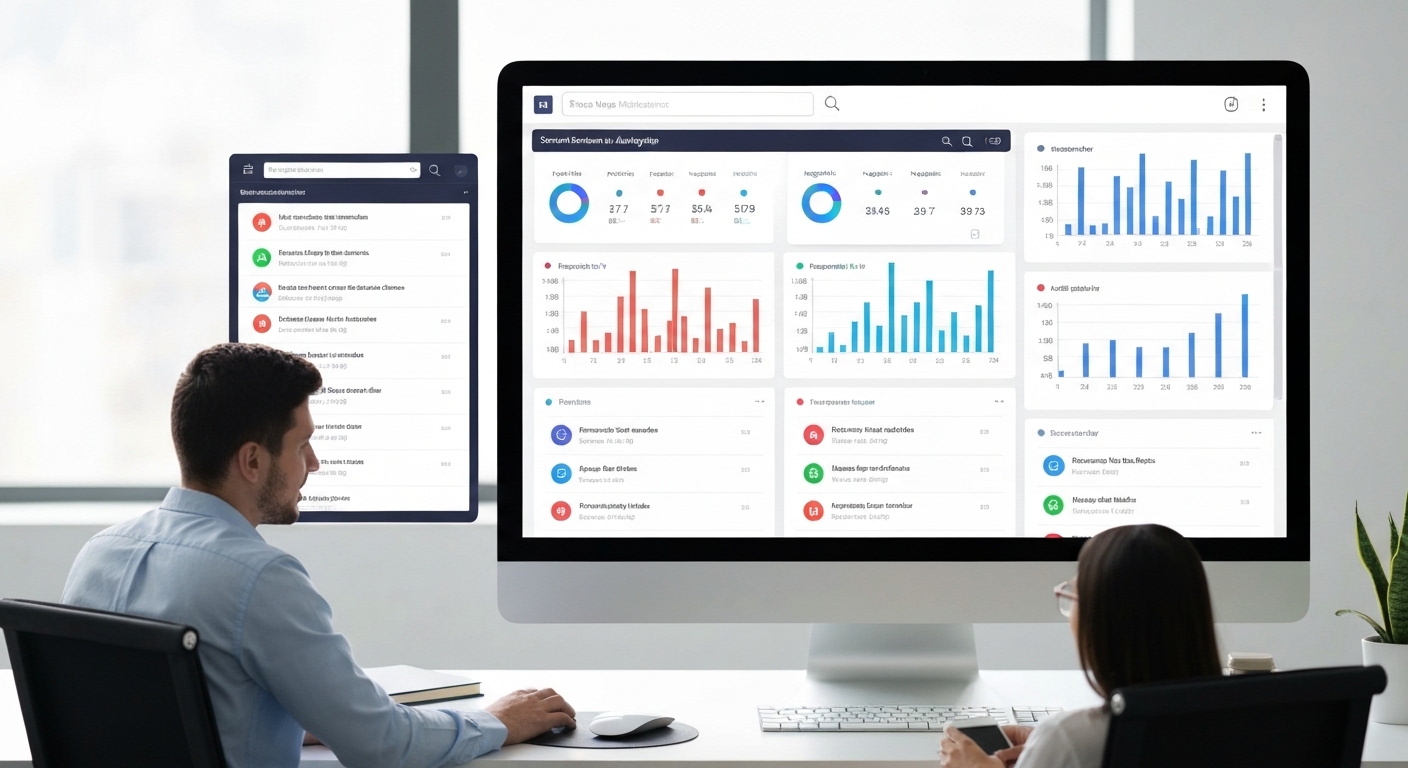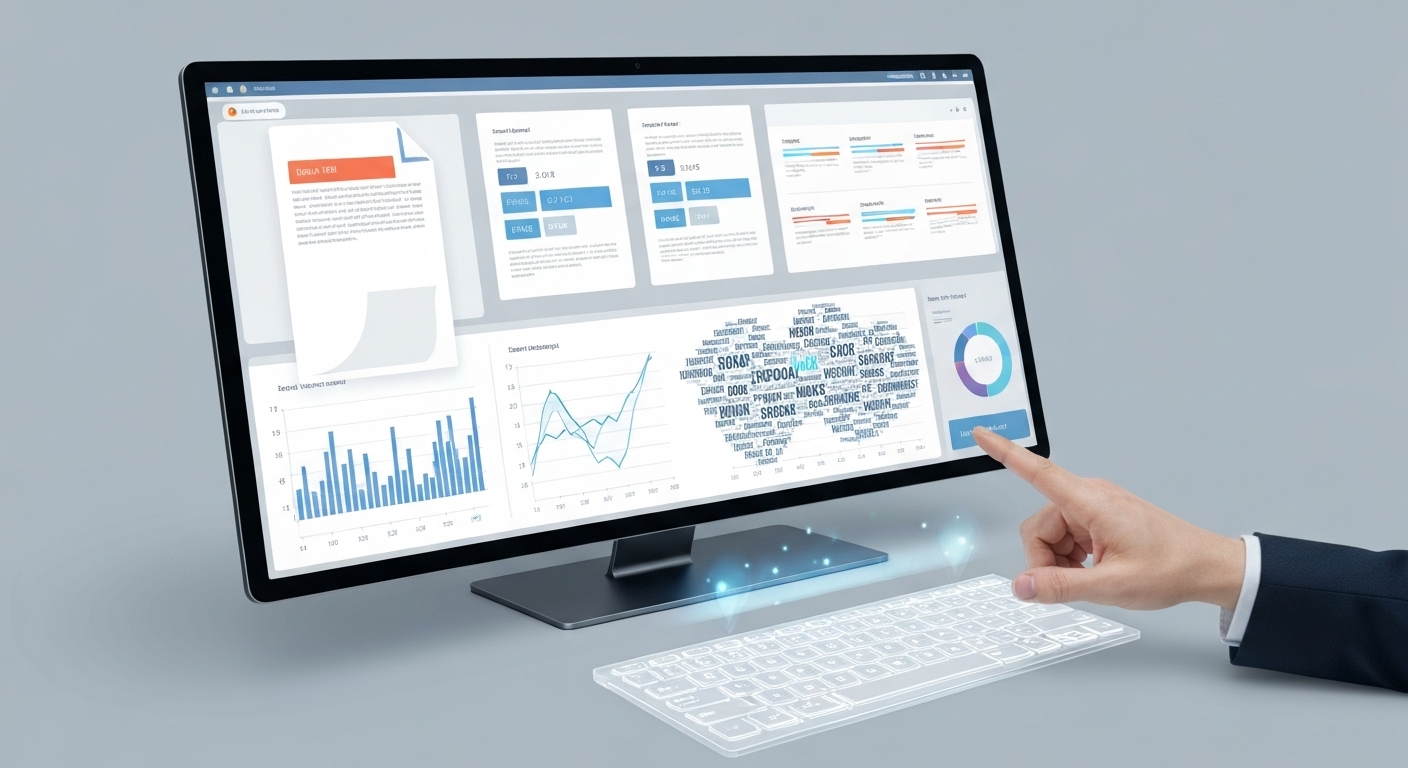Using AI for Sentiment Analysis : A Comprehensive Guide
Using AI for sentiment analysis is rapidly transforming how businesses and organizations understand and respond to human emotions. This powerful technology leverages natural language processing (NLP) and machine learning to automatically identify and categorize the sentiment expressed in text data. From gauging customer satisfaction to monitoring brand reputation, AI-driven sentiment analysis offers invaluable insights for making data-driven decisions.
What is Sentiment Analysis and Why Use AI?
Sentiment analysis, also known as opinion mining, is the process of determining the emotional tone behind a piece of text. This can range from positive, negative, or neutral. Traditional methods of sentiment analysis often involved manual coding or rule-based systems, which are time-consuming and prone to human error.

Using AI for sentiment analysis offers several advantages:
- Scalability: AI can process large volumes of text data quickly and efficiently.
- Accuracy: Machine learning algorithms can learn to identify subtle nuances in language that humans might miss.
- Consistency: AI provides consistent results, eliminating the subjectivity inherent in manual analysis.
- Real-time Analysis: AI can analyze sentiment in real-time, allowing for immediate responses to emerging trends or crises.
How AI Powers Sentiment Analysis: Key Techniques
Several AI techniques are employed in sentiment analysis. Here are some of the most common:
Natural Language Processing (NLP)
NLP is the foundation of AI-powered sentiment analysis. It involves breaking down text into its component parts and analyzing its grammatical structure and meaning. NLP techniques used in sentiment analysis include:
- Tokenization: Dividing text into individual words or phrases.
- Part-of-speech tagging: Identifying the grammatical role of each word (e.g., noun, verb, adjective).
- Named entity recognition: Identifying and classifying named entities, such as people, organizations, and locations.
- Stemming and lemmatization: Reducing words to their root form to improve accuracy.

Machine Learning Algorithms
Machine learning algorithms learn from data to identify patterns and make predictions. Several machine learning algorithms are commonly used in sentiment analysis:
- Naive Bayes: A simple probabilistic classifier that is often used as a baseline for sentiment analysis.
- Support Vector Machines (SVM): A powerful classifier that can handle high-dimensional data.
- Recurrent Neural Networks (RNNs): A type of neural network that is well-suited for processing sequential data, such as text.
- Transformers: A more recent type of neural network that has achieved state-of-the-art results in many NLP tasks, including sentiment analysis. Models like BERT and RoBERTa are transformer-based and highly effective.
Lexicon-Based Approaches
Lexicon-based approaches rely on pre-defined dictionaries of words and their associated sentiment scores. These approaches assign a sentiment score to a piece of text based on the sentiment scores of the words it contains. While less sophisticated than machine learning approaches, lexicon-based methods can be useful for specific applications where labeled data is scarce. Examples of lexicon-based tools include VADER (Valence Aware Dictionary and sEntiment Reasoner).
Applications of Using AI for Sentiment Analysis
The applications of using AI for sentiment analysis are vast and span across various industries. Here are some notable examples:
Customer Feedback Analysis
Businesses can use sentiment analysis to analyze customer feedback from surveys, reviews, and social media to understand customer satisfaction and identify areas for improvement. This allows companies to proactively address customer concerns and enhance their products and services.
Social Media Monitoring
Sentiment analysis can be used to monitor social media conversations to track brand reputation, identify emerging trends, and detect potential crises. By understanding public sentiment towards a brand or product, companies can tailor their marketing strategies and respond to negative feedback in a timely manner.

Market Research
Sentiment analysis can be used to analyze market research data to understand consumer preferences and predict market trends. This information can be valuable for developing new products and services that meet customer needs.
Political Analysis
Political campaigns and organizations can use sentiment analysis to gauge public opinion on candidates and policies. This information can be used to tailor campaign messaging and target specific demographics.
Employee Engagement
Companies are increasingly using AI for sentiment analysis of employee feedback from surveys and internal communications to gauge employee morale and identify areas where improvements can be made to foster a positive work environment.
Challenges and Considerations
While using AI for sentiment analysis offers numerous benefits, it’s important to be aware of the challenges and considerations involved:
Contextual Understanding
AI algorithms can struggle to understand the context of language, which can lead to inaccurate sentiment analysis. For example, sarcasm and irony can be difficult for AI to detect.
Data Bias
AI models are trained on data, and if that data is biased, the model will also be biased. It’s important to ensure that training data is diverse and representative of the population being analyzed.
Multilingual Support
Developing sentiment analysis models for multiple languages can be challenging due to differences in grammar, vocabulary, and cultural context.
Evolving Language
Language is constantly evolving, with new words and phrases emerging all the time. AI models need to be continuously updated to keep pace with these changes. Keeping up with slang, abbreviations, and new internet jargon requires constant model retraining.
Getting Started with AI Sentiment Analysis
Several tools and platforms are available to help you get started with using AI for sentiment analysis:
- Cloud-based APIs: Services like Google Cloud Natural Language API, Amazon Comprehend, and Microsoft Azure Text Analytics provide pre-trained sentiment analysis models that can be easily integrated into your applications.
- Open-source libraries: Libraries like NLTK, spaCy, and scikit-learn offer tools and algorithms for building your own sentiment analysis models.
- Sentiment analysis platforms: Platforms like Brandwatch and Mention provide comprehensive sentiment analysis solutions for social media monitoring and brand management.
The Future of Sentiment Analysis with AI
The field of sentiment analysis is constantly evolving, with new advancements in AI and NLP leading to more accurate and sophisticated models. Future trends include:
- Improved Contextual Understanding: AI models will become better at understanding the context of language, leading to more accurate sentiment analysis.
- Multimodal Sentiment Analysis: Combining text analysis with other modalities, such as images and video, to provide a more complete understanding of sentiment.
- Emotion AI: Moving beyond basic sentiment analysis to detect a wider range of emotions, such as joy, sadness, anger, and fear. This is sometimes referred to as affective computing.
- Personalized Sentiment Analysis: Tailoring sentiment analysis models to individual users or groups based on their specific language and communication styles.
As AI technology continues to advance, using AI for sentiment analysis will become even more powerful and accessible, enabling businesses and organizations to gain deeper insights into human emotions and make more informed decisions. You can integrate AI sentiment analysis into your current business processes with flashs.cloud.

Conclusion
Using AI for sentiment analysis is a game-changing technology that empowers organizations to understand and respond to human emotions at scale. By leveraging the power of NLP and machine learning, businesses can gain valuable insights into customer feedback, brand reputation, market trends, and more. While challenges remain, the future of sentiment analysis with AI is bright, promising even more accurate, sophisticated, and personalized solutions. You can read more about sentiment analysis on the National Institute of Standards and Technology website: NIST.
HOTLINE
+84372 005 899


